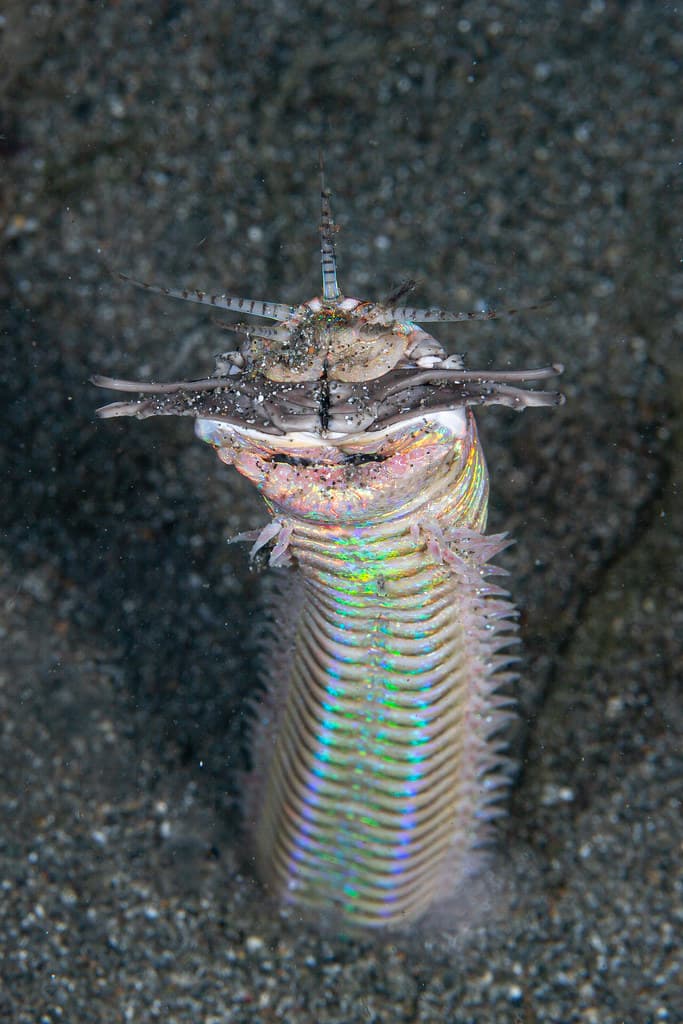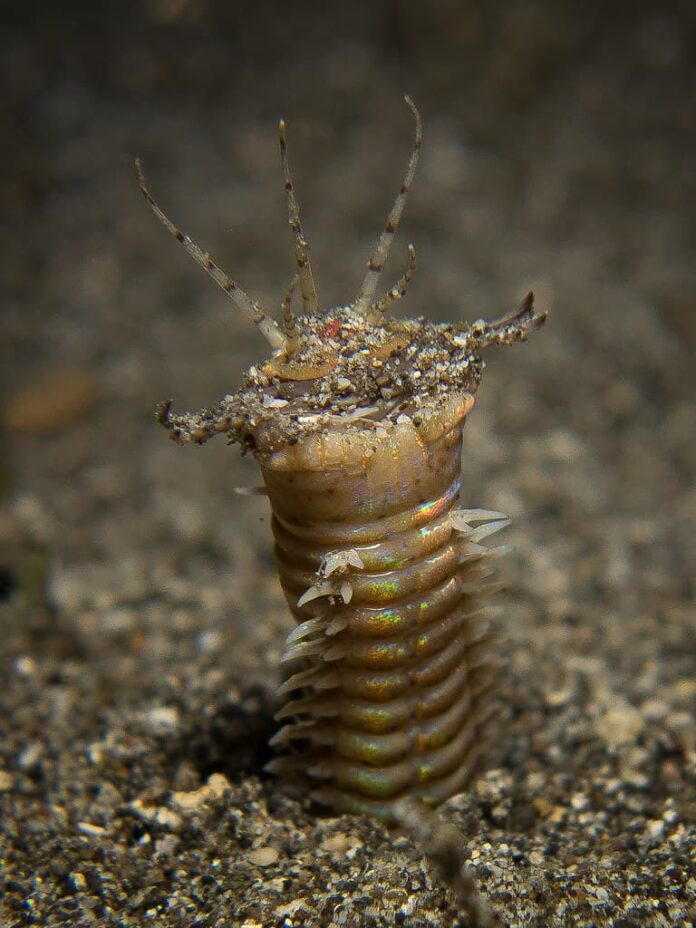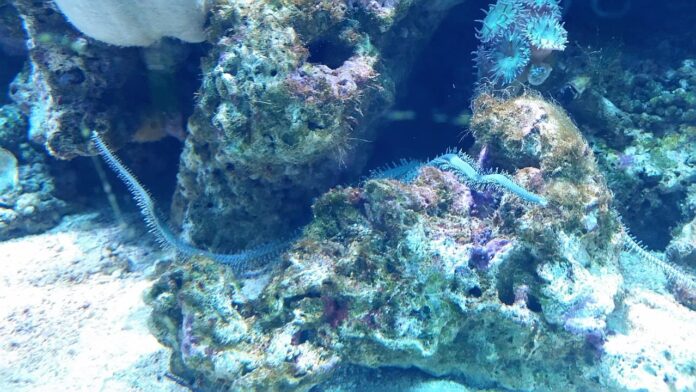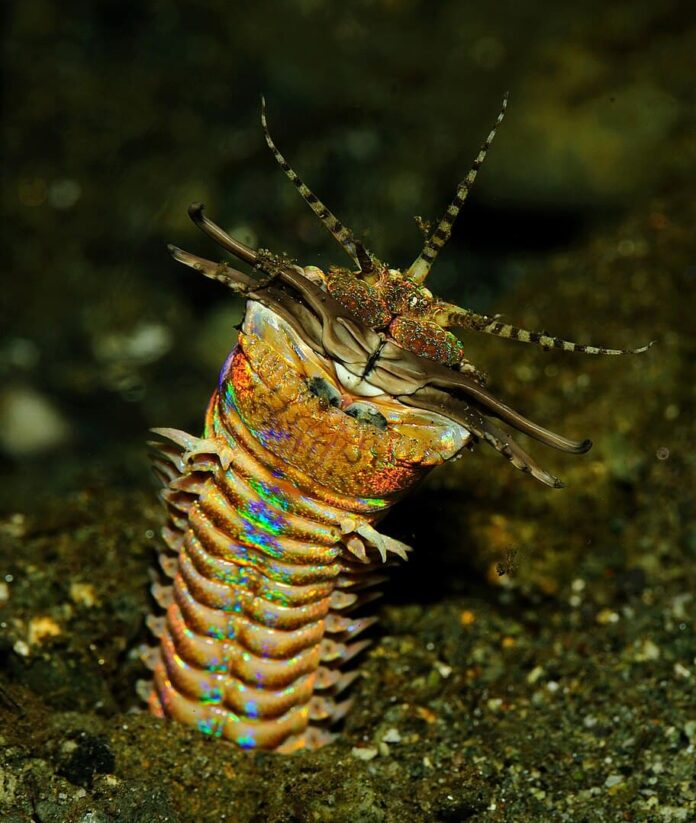Many marine animals are bizarre, and the bobbitt worm is one of those. No matter how long you look at it, this creature is just so out of the world. It looks like it is from another planet, and every detail on its body is rather fascinating. I am sure this is the first time you have heard about this unique creature as well, and we shall find out more below.
1Appearance

At a glance, a bobbitt worm looks like a colorful centipede but I’d like to see it as a mini dragon instead. Its exoskeleton has a combination of metallic colors along with deep purple to black bristles. Probably looks small, a bobbitt worm can be as short as 10 centimeters or up to 3 meters. The entire body is segmented, the longer ones can have up to 1500 segments. A bobbitt worm does not look anything intimidating but it actually has extremely sharp mouthparts. The muscular and tooth-studded throat lining that can be turned inside out allows these ambush predators to snap their prey in half. When open, their retractable jaws can extend past their body and they are also wider than their body as well.
While looking so gorgeously magnificent, these bristle worms are almost completely blind though they have a pair of eyes. However, they have 5 antennae on their head that help them to sense prey. And you probably wonder what those little legs can do, they are bristles that help them coming out of their burrows. The bristles allow them to grip onto their burrow’s wall to stay in position both when hiding, hunting, and feeding. These bristles are capable of causing numbness and permanent nerve damage in humans, and there is no treatment for that yet. The good thing is they are not aggressive and they do not attack people at all.
2Behavior

Bobbitt worms are nocturnal so they hide during the day and emerge to feed during the night. As the night comes, these glittery worms partially emerge from their burrow to lunge at any passing prey. When it comes to hunting, a bobbitt worm also has another special ability to use toxins to subdue or kill its prey. They only use this method when the prey is larger than it to make digestion easier. Not so much of a behavior but bobbitt worms can split into several parts when they feel threatened. They also do the same when they reproduce, asexually, of course, and this is called “multiplying”. And in case they are accidentally cut in half, a bobbitt worm can regenerate entire clones of itself from the detached segments.
3Feeding & Habitats

The way it hunts is that it first senses the prey using the antennae before seizing them with its mouth. Then, it drags the meal into its burrow before consuming the food in there. Their common meals are fish but they are also feed on algae, decomposers, dead and decaying matter, and detritus. Some other side dishes are octopus, shrimps, squids, and various worm species that are unfortunate enough to swim by.
Bobbitt worms live at the bottom of subtropic and tropic bodies of water in the Atlantic Ocean and the Indo-Pacific. They live among coral reefs where they can easily blend in with their colorful bodies. More than that, they also live in muddy and sandy sediments as well as around rocks and sponges. So far, they have been discovered in Australia, Bali, Fiji, Indonesia, New Guinea, and the Philippines.
Related Post: Marine Monsters You Probably Haven’t Seen




